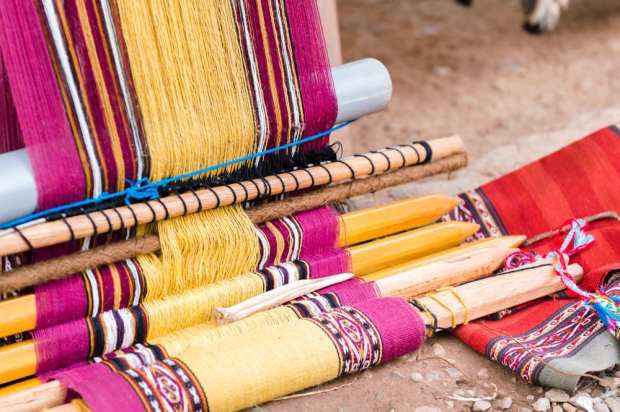Tracing The Path Of Sustainable Luxury Back To 1970s Peru

Back in the 1970s, when Annie Hurlbut Zander was an anthropology student researching Andean marketplaces in Peru, she became, in her own words, “addicted” to the textiles she would come across. “In the Andes, each village has its own distinctive weaving style, its own iconography and symbolism,” she told PYMNTS in a recent interview. “You could tell exactly where someone was from.”
When she returned to the U.S. for her mother’s 50th birthday, Zander brought as a gift a sweater made from the fleece of an alpaca. The camelid species lives some 13,000 feet up in the Andes, the largest mountain range in South America, and the production of its fiber fuels the economy for many Peruvians, often via small craft and knitting operations.
Even though alpaca apparel was relatively unknown in the U.S. back then, and often had a reputation for being too scratchy, the sweater was a hit with her mom’s pals, and Zander was encouraged to start importing them. Along with her mother, she launched Peruvian Connection in 1976 and began selling alpaca-based products to boutiques in the U.S.
Sustainable Luxury
Nearly 45 years later, Peruvian Connection operates as what one might call a sustainable luxury brand, and does business not only via boutiques, but also eCommerce. PYMNTS caught up with Zander to learn more about trends in sustainable commerce – a big retail theme going into the 2020s, especially given that millennial consumers are not only attracted to sustainability, but are moving up the income ranks. The interview provided a glimpse of how sustainable commerce – and sustainable luxury – might play out in the coming years.
“All of our goods are handmade except for a few items,” she said, and almost all are hand finished, voicing one of the main ideals required for successful sustainable commerce. The reputation of alpaca has changed drastically in those decades since Zander was an anthropologist, with softer fibers coming into the market – including from young alpacas – and workers figuring out how to effectively dye the material. “You now have more than 100 dyes and shades,” Zander said of Peruvian Connection’s exclusive collection, and others are also available. “The fiber has become more sophisticated over time.”
That increasing sophistication and appeal has caught the attention of larger operations. But relationships with the small-scale artisans are key – relationships Zander started to make when she was a researcher in Peru all those years ago. The idea behind a true-blue, sustainable luxury operation is not to keep negotiating ever-lower prices from fiber sources, but to pay them fairly. “Every year, we send our designers down there to the cottage industries,” she told PYMNTS. “We are there year after year, coming back to the same people.”
Many of those industries are women-owned, and not only are wages higher than the local average, but the jobs can provide transportation, food and other benefits. And competition for those knitters of alpaca fibers can further serve to increase the benefits for those workers, Zander said.
Sourcing from those small operations is not the only trait that can appeal to luxury-minded consumers who are focused on sustainable commerce, she said. The fact that the alpaca live at heights where relatively few other animals live, and don’t cause the same ecological damage as, say, cashmere goats or sheep, is a mark in favor of that animal’s fiber, at least among consumers of a certain mindset.
“People who are educated and really exposed to the world appreciate where the goods come from,” Zander said. “They not only appreciate the design, but it really matters how (the products) are produced.”
Sustainable Commerce Trends
The trend toward sustainable commerce is playing out in multiple ways in late 2019, with much of the fuel coming from millennial consumers. Delivery is one of many areas where that trend is gaining speed. To help consumers order produce and household staples in an environmentally friendly way, startups are offering grocery deliveries through reusable containers and bicycles.
The Wally Shop, in one case, is “a grocery delivery service that uses entirely reusable packaging that’s picked back up again for reuse,” Founder Tamara Lim told PYMNTS in an interview. The eco-friendly service is “a whole new way to essentially shop without having to compromise on convenience, selection or price,” she said, adding that the company doesn’t work on a subscription business model.
As for Peruvian Connection, eCommerce now makes up some 70 percent of its U.S. sales, with a lower rate in Europe, Zander said. The company also publishes catalogs (which boost online sales) and operates eight brick-and-mortar stores, which serve to satisfy the consumer’s need to actually feel those luxury products and fibers in their hands. The company might also break into home goods, she told PYMNTS.
As for Zander, she still has an anthropologist’s love and understanding of Peruvian culture and those Andean marketplaces – but she doesn’t regret the choice she made back in the mid-1970s. “I never saw myself as an academic, to be honest,” Zander said. “I love being an entrepreneur.”
